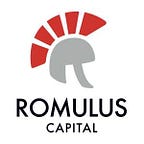Four things your investors should be doing for your startup
By John Tincoff
A lot of ink has been spilled talking about tech’s extraordinary buildup over the past decade. Apple just hit a trillion dollars in market cap on Thursday. Naturally, there are a lot more VC firms out there now than in 2008, and for founders, that means a much wider pool of potential partners to pick from.
In that time, I’ve gotten to know many entrepreneurs who have had big rounds and small rounds, failures and exits. One thing I’ve come to appreciate from all of them is the impact made by a truly engaged investor.
So how do you tell the difference between that engaged investor and one who takes a back seat?
During your conversations, ask investors what you can count on from them after the deal is done. At Romulus Capital, we tend to center our thinking around four value themes: the network, the team, the fundraise, and the board.
1. The Network — customers, partners, advisors
Investors tend to be prolific networkers with access asymmetric to your own. By their nature, a VC’s view into new technology trends mean we talk to a lot of folks — investors, corporates, consultants, academics and so on — and can open some unexpected doors. This leads to potential customers, go-to-market partners, sources of market advice, and even hires.
For those of us in B2B technology, this means pitching in on our teams’ sales efforts. This can cover a lot of ground, e.g. a warm introduction to a Fortune 500 CEO, a backchannel reference in R&D, advice on corporate contracting. Getting from pilot > expansion > repeatability will always take hard work and a dose of luck… but it can be transformational when you can get that high-impact assist from your investor.
2. The Team — who you need, how to close ‘em
One thing we’ve seen quite frequently is how helpful the investor can be gunning for that next big hire. Early on, that can mean anticipating the need itself before the team does or finding the person once the role is identified. As the effort progresses, this should include a second set of eyes vetting late-stage candidates and asking the right questions. Vinod Khosla is a big believer in this value and the idea of A+ talent seeding more A+ talent.
Whether the hire is a VP Sales or a CTO, investors can often tell the backstory of a company at more arms-length and consequently with a broader view. We can compare this company to others we know/have invested in, and speak compellingly to why this one over all the others we looked at. Indeed, any talented exec will view this as a serious investment of their own, so that shared vantage can help turn our conviction into an ideal new teammate.
3. The Fundraise — prepping for that next summit
Your investor is also uniquely positioned to serve the role of guide for the next round. Like the Sherpas of Nepal, they tend to know the trails over the peaks, the locals along the way, and the crossings to avoid. This is not passing on responsibility but a critical boost in running the process, driving the round to a better partner while also optimizing around valuation and dilution.
There’s also a lot of prep in the lead up to the process itself. Everything from cleaning up your cap table, the timing of knowing when to raise, and early introductions to who you’ll raise from. Moreover, some funds have the flexibility to bridge you to the next step change in value creation — giving you a much better (and ideally faster) round. Nothing drains your mindshare like fundraising.
4. The Board — insights and leverage
Though boards aren’t common until the Series A, the vision that your lead investor can add from Seed onward is crucial. From anticipating the pivot into a new product category, dealing with a toxic team member, fielding M&A overtures, to knowing to lean into growth opportunities — while a founder might come to the same decision given more data points, a venture investor’s instincts can help save that critical resource: time.
Depending on the industry you’re in, there’s a level of expertise you should look for from your investor in building vertical or horizontal technology companies. As startups grow, we love bringing on independent directors with leadership experience in that specific type of company or market to create leverage for founders. Fred Wilson @ USV wrote about this recently and I couldn’t agree more — especially concerning the value of a diverse board.
—
In the end, not every investor on your cap table ought to fit this exact profile. But it makes sense to have a lead investor that offers a mix of experience and perspectives — perhaps one or two that complement you or each other. The value add relies greatly on the unique partnership between that investor and entrepreneur — the alchemy of which is more of art than science.
Given this, take a step back during the early conversation and ask investors to offer specific examples of where they’ve made that difference before and how they’ll do it together with you again.
